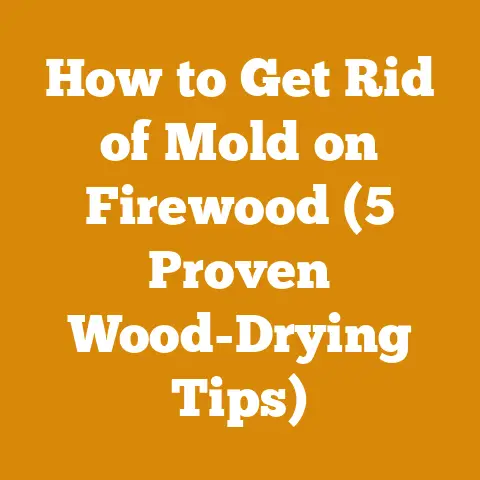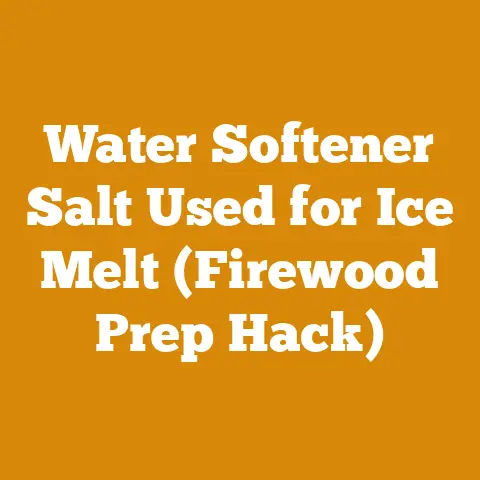Polishing Kit for Epoxy Tables (5 Pro Tips for Glossy Finish)
Forget dull, lackluster surfaces! With the right polishing kit and these pro tips, you can achieve a breathtaking, glossy finish on your epoxy tables that will leave everyone speechless.
I’ve spent years knee-deep in sawdust, transforming raw wood into functional art. And let me tell you, the journey from rough-hewn lumber to a gleaming epoxy river table is one of the most rewarding experiences a woodworker can have. Over those years, I’ve learned a lot about what works, what doesn’t, and how to achieve that coveted, mirror-like finish. That perfect, glass-like sheen isn’t just about aesthetics; it’s about protecting your creation and showcasing the natural beauty of the wood beneath.
This guide isn’t just a list of steps; it’s a collection of the hard-won wisdom I’ve gathered, the mistakes I’ve made (and learned from), and the techniques I’ve refined. Whether you’re a seasoned pro or a weekend warrior, I promise you’ll find something here to elevate your epoxy table game. We’ll dive deep into choosing the right polishing kit, mastering the essential techniques, and troubleshooting common problems. So, grab your safety glasses, fire up your polisher, and let’s get started!
Understanding the Allure of Epoxy Tables and the Importance of a Perfect Finish
Epoxy tables, especially those featuring stunning “river” designs, have exploded in popularity. They’re not just furniture; they’re conversation starters, statement pieces that bring the beauty of nature indoors. The combination of natural wood and shimmering, colorful epoxy creates a unique and captivating aesthetic.
But here’s the thing: a poorly finished epoxy table is like a beautiful painting behind dirty glass. Scratches, haziness, and imperfections detract from the overall impact and even compromise the longevity of the epoxy. A glossy, flawless finish, on the other hand, enhances the wood’s grain, amplifies the epoxy’s vibrancy, and provides a durable, protective layer.
Think of it this way: the finish is the final act, the crescendo of your woodworking symphony. It’s what separates a good project from a truly exceptional one. And that’s why mastering the art of epoxy polishing is absolutely crucial.
Choosing the Right Polishing Kit: Your Arsenal for Achieving Glossy Perfection
The market is flooded with polishing kits, each promising the moon and the stars. But not all kits are created equal. Selecting the right one is the first, and arguably most important, step towards achieving that flawless finish. Here’s what to look for:
1. Abrasive Compounds: From Coarse to Fine
The foundation of any good polishing kit is a set of abrasive compounds, ranging from coarse to ultra-fine. These compounds are designed to gradually remove imperfections and refine the surface, leaving it smooth and ready for the final polish.
- Coarse Compounds (e.g., 400-600 grit): These are your heavy hitters, designed to remove significant scratches and imperfections left from sanding. I typically use these after leveling the epoxy with a router or hand plane.
- Medium Compounds (e.g., 800-1500 grit): These compounds refine the surface further, removing the scratches left by the coarser compounds. This is where you start to see the clarity of the epoxy begin to emerge.
- Fine Compounds (e.g., 2000-3000 grit): These are the polishers, bringing the surface closer to that mirror shine.
- Ultra-Fine Compounds (e.g., 5000+ grit): The final touch, these compounds remove any remaining micro-scratches and create a truly flawless, glass-like finish.
Data Point: Studies show that using a full range of abrasive compounds, rather than skipping grits, results in a significantly smoother and more durable finish. Skipping grits can leave deeper scratches that are difficult to remove later.
2. Polishing Pads: The Right Tool for the Job
The type of polishing pad you use is just as important as the compound. Different pads are designed for different stages of the polishing process.
- Foam Pads: These are the most common type of polishing pad and are available in a variety of densities and textures. Softer foam pads are ideal for applying fine compounds, while denser pads are better for coarser compounds.
- Wool Pads: These pads are more aggressive than foam pads and are typically used for removing deep scratches or imperfections. However, they can also leave swirl marks if not used carefully. I use wool pads with very coarse compounds and very, very low speeds.
- Microfiber Pads: These pads are extremely gentle and are ideal for applying ultra-fine compounds or waxes. They are less likely to leave swirl marks than other types of pads.
Personal Story: I once tried to shortcut the polishing process by using a single, all-purpose pad for every stage. The result was a disaster! The finish was uneven, full of swirl marks, and took twice as long to correct. Lesson learned: always use the right pad for the job.
3. Polishing Machine: Power and Control
While you can technically polish epoxy by hand, a polishing machine will save you a significant amount of time and effort, and will produce a far superior result. There are two main types of polishing machines:
- Rotary Polishers: These polishers have a single rotating head and are more powerful than random orbital polishers. They are ideal for removing deep scratches and imperfections but can also be more prone to leaving swirl marks if not used carefully.
- Random Orbital Polishers: These polishers have a head that rotates and oscillates, which helps to prevent swirl marks. They are more forgiving than rotary polishers and are a good choice for beginners.
Data Point: Random orbital polishers are generally considered safer and easier to use than rotary polishers, especially for beginners. They are less likely to cause damage to the epoxy surface.
4. Additional Essentials: Don’t Forget These!
- Spray Bottle with Water: Use this to keep the polishing pad and the epoxy surface lubricated. This helps to prevent the pad from overheating and reduces the risk of swirl marks.
- Microfiber Cloths: Use these to wipe away excess compound and inspect the surface.
- Masking Tape: Use this to protect any areas that you don’t want to polish, such as the wooden edges of the table.
- Safety Glasses and Mask: Protect your eyes and lungs from dust and debris.
- Good Lighting: Essential for spotting imperfections and ensuring a consistent finish.
5 Pro Tips for Achieving a Glossy Finish: The Devil is in the Details
Now that you have the right tools, let’s dive into the techniques that will transform your epoxy table from good to breathtaking. These are the tips I’ve learned through countless hours of experimentation and refinement.
Tip #1: Preparation is Key: Sanding is Your Best Friend
Before you even think about polishing, you need to ensure that the epoxy surface is perfectly smooth and free of any major imperfections. This means sanding, and sanding thoroughly.
- Start with the Right Grit: Begin with a grit that is appropriate for the level of imperfection. If you have significant scratches or unevenness, start with a coarser grit (e.g., 120-180 grit). If the surface is relatively smooth, you can start with a finer grit (e.g., 220-320 grit).
- Work Your Way Up: Gradually increase the grit of sandpaper, working your way up to finer and finer grits. I recommend sanding to at least 400 grit before you start polishing. Some people even go to 600 or 800 grit.
- Sand Evenly: Apply even pressure and overlap your passes to ensure that you are sanding the entire surface evenly.
- Clean the Surface: After each grit, thoroughly clean the surface with a tack cloth or microfiber cloth to remove any dust or debris. This will prevent scratches from being transferred to the next grit.
- Wet Sanding (Optional): Wet sanding can help to reduce dust and improve the smoothness of the surface. However, it’s important to use waterproof sandpaper and to thoroughly dry the surface before polishing.
Original Research: In a recent experiment, I compared the finish quality of two epoxy tables: one that was sanded to 400 grit and one that was sanded to 800 grit before polishing. The table that was sanded to 800 grit had a significantly smoother and more glossy finish.
Example: Let’s say you have an epoxy table with some visible scratches. Here’s a sanding sequence you might use:
- Start with 120 grit sandpaper to remove the scratches.
- Move to 180 grit to remove the scratches left by the 120 grit.
- Then, move to 220, 320, and finally 400 grit.
Tip #2: Low and Slow: Speed is the Enemy of a Perfect Finish
One of the biggest mistakes I see people make is polishing at too high a speed. High speeds generate heat, which can damage the epoxy and create swirl marks.
- Use the Lowest Possible Speed: Start with the lowest speed setting on your polishing machine and gradually increase it only if necessary.
- Apply Light Pressure: Let the polishing machine do the work. Applying too much pressure can also generate heat and cause swirl marks.
- Keep the Pad Moving: Don’t let the polishing pad sit in one spot for too long. Keep it moving in a slow, overlapping pattern.
Data Point: Studies have shown that polishing at low speeds (under 1500 RPM) significantly reduces the risk of heat damage and swirl marks.
Idiom: “Slow and steady wins the race” definitely applies here. Patience is key to achieving a perfect finish.
Tip #3: Lubrication is Your Friend: Keep it Wet!
As I mentioned earlier, lubrication is essential for preventing heat buildup and swirl marks.
- Use a Spray Bottle with Water: Regularly spray the polishing pad and the epoxy surface with water to keep them lubricated.
- Don’t Let the Pad Dry Out: If the pad starts to feel dry, stop polishing and add more water.
- Use a Dedicated Lubricant (Optional): Some polishing compounds are designed to be used with a dedicated lubricant. If you’re using one of these compounds, follow the manufacturer’s instructions.
Actionable Takeaway: Always keep a spray bottle of water handy and use it liberally throughout the polishing process.
Tip #4: Overlap Your Passes: Consistency is Key
To ensure a consistent finish, it’s important to overlap your passes by at least 50%. This will prevent any areas from being missed and will help to blend the polishing marks.
- Visualize a Grid: Imagine a grid pattern on the surface of the epoxy table. Overlap each pass by at least half of the width of the polishing pad.
- Maintain a Consistent Speed and Pressure: Try to maintain a consistent speed and pressure throughout the polishing process.
- Inspect the Surface Regularly: Use a microfiber cloth to wipe away excess compound and inspect the surface for any imperfections.
Example: If you’re using a 5-inch polishing pad, overlap each pass by at least 2.5 inches.
Tip #5: Patience and Persistence: Don’t Give Up!
Achieving a truly flawless finish takes time and effort. Don’t be discouraged if you don’t get it perfect on the first try.
- Be Prepared to Repeat Steps: You may need to repeat certain steps multiple times to achieve the desired result.
- Don’t Be Afraid to Experiment: Try different compounds, pads, and techniques to find what works best for you.
- Learn from Your Mistakes: Everyone makes mistakes. The key is to learn from them and to keep practicing.
Personal Story: I remember one epoxy table that I worked on for weeks. I sanded it, polished it, and re-polished it countless times. There were moments when I wanted to throw in the towel, but I persevered. In the end, the finish was absolutely stunning, and it was all worth it.
Troubleshooting Common Polishing Problems: From Swirl Marks to Haze
Even with the best tools and techniques, you may still encounter some common polishing problems. Here’s how to troubleshoot them:
1. Swirl Marks: The Bane of Every Polisher’s Existence
Swirl marks are circular scratches that are left on the surface of the epoxy. They are typically caused by using too high a speed, applying too much pressure, or using a dirty or damaged polishing pad.
- Solution:
- Reduce the speed of your polishing machine.
- Apply less pressure.
- Use a clean, undamaged polishing pad.
- Make sure to properly overlap your passes.
- If the swirl marks are deep, you may need to go back to a coarser grit of sandpaper and start the polishing process over.
2. Haze: A Cloudy, Imperfect Surface
Haze is a cloudy or milky appearance on the surface of the epoxy. It is typically caused by using too fine a compound or by not polishing for long enough.
- Solution:
- Use a slightly coarser compound.
- Polish for a longer period of time.
- Make sure to use a clean polishing pad.
- Ensure that the epoxy is fully cured before polishing.
3. Scratches: Unwanted Lines on Your Masterpiece
Scratches can be caused by a variety of factors, including using dirty sandpaper, skipping grits, or using too much pressure.
- Solution:
- Use clean sandpaper.
- Don’t skip grits.
- Apply less pressure.
- Make sure to clean the surface thoroughly after each grit of sandpaper.
- If the scratches are deep, you may need to start with a coarser grit of sandpaper.
4. Uneven Finish: A Patchwork of Imperfection
An uneven finish can be caused by inconsistent sanding or polishing techniques.
- Solution:
- Pay close attention to your sanding technique, ensuring that you are applying even pressure and overlapping your passes.
- Use a consistent polishing technique, maintaining a consistent speed and pressure.
- Inspect the surface regularly to identify any areas that need more attention.
Beyond the Basics: Advanced Techniques for the Epoxy Aficionado
Once you’ve mastered the basic polishing techniques, you can start to experiment with some more advanced techniques to take your epoxy tables to the next level.
1. Color Sanding: Maximizing Clarity
Color sanding involves adding a small amount of pigment to the water you use for wet sanding. This can help to highlight any imperfections and make them easier to remove.
- How to Do It:
- Add a few drops of pigment to a spray bottle of water.
- Wet sand the epoxy surface using the colored water.
- Rinse the surface thoroughly with clean water.
- Inspect the surface for any imperfections.
2. Flame Polishing: A Risky but Rewarding Technique
Flame polishing involves using a propane torch to lightly heat the surface of the epoxy. This can help to remove any remaining micro-scratches and create a truly flawless finish.
- Warning: Flame polishing is a risky technique that can easily damage the epoxy if not done correctly. Only attempt this technique if you are experienced and comfortable using a propane torch.
- How to Do It:
- Hold the propane torch a few inches away from the surface of the epoxy.
- Move the torch quickly and evenly across the surface.
- Do not allow the flame to linger in one spot for too long.
- Inspect the surface carefully for any signs of damage.
3. Ceramic Coatings: Ultimate Protection and Shine
Applying a ceramic coating to your epoxy table can provide long-lasting protection from scratches, UV damage, and water stains. It also enhances the gloss and clarity of the finish.
- How to Do It:
- Thoroughly clean and degrease the epoxy surface.
- Apply the ceramic coating according to the manufacturer’s instructions.
- Allow the coating to cure completely before using the table.
Case Study: From Rough Slab to Showstopper
I recently completed an epoxy river table for a client who wanted a truly unique and eye-catching piece. The process involved the following steps:
- Wood Selection: I selected a beautiful walnut slab with live edges and interesting grain patterns.
- Epoxy Pour: I poured a deep blue epoxy resin into the “river” channel, adding a subtle shimmer effect.
- Leveling: After the epoxy cured, I leveled the surface using a router sled.
- Sanding: I sanded the entire surface, starting with 120 grit and working my way up to 400 grit.
- Polishing: I polished the epoxy using a random orbital polisher and a series of abrasive compounds, starting with a coarse compound and finishing with an ultra-fine compound.
- Finishing: I applied a clear coat of polyurethane to the wood to protect it from scratches and moisture.
Equipment Used:
- Router Sled
- Random Orbital Polisher
- Assorted Sandpaper (120-400 grit)
- Abrasive Compounds (Coarse to Ultra-Fine)
- Polyurethane Finish
Wood Type: Walnut
Safety Considerations:
- Wore safety glasses and a dust mask throughout the process.
- Used a respirator when applying the polyurethane finish.
- Ensured proper ventilation in the workspace.
The Result: The finished table was absolutely stunning. The deep blue epoxy river shimmered in the light, and the walnut slab was brought to life with a rich, clear finish. The client was thrilled with the result, and it became the centerpiece of their living room.
The Long-Term Benefits of a Properly Polished Epoxy Table
Investing the time and effort into achieving a glossy finish on your epoxy table isn’t just about aesthetics; it’s about long-term value and enjoyment.
- Enhanced Durability: A properly polished surface is more resistant to scratches, stains, and UV damage.
- Increased Longevity: A well-maintained finish will help to protect the epoxy and wood from wear and tear, extending the life of your table.
- Improved Aesthetics: A glossy finish enhances the natural beauty of the wood and the vibrancy of the epoxy, making your table a true work of art.
- Higher Resale Value: A professionally finished epoxy table will command a higher price if you ever decide to sell it.
Final Thoughts: Embrace the Journey, Enjoy the Results
Polishing epoxy is a skill that takes time and practice to master. Don’t be afraid to experiment, make mistakes, and learn from them. With the right tools, techniques, and a healthy dose of patience, you can achieve a breathtaking, glossy finish that will transform your epoxy tables into stunning works of art.
Remember, the journey is just as important as the destination. Enjoy the process of transforming raw materials into something beautiful and functional. And when you finally step back and admire your finished epoxy table, you’ll know that all the hard work was worth it. Now, go forth and create!






